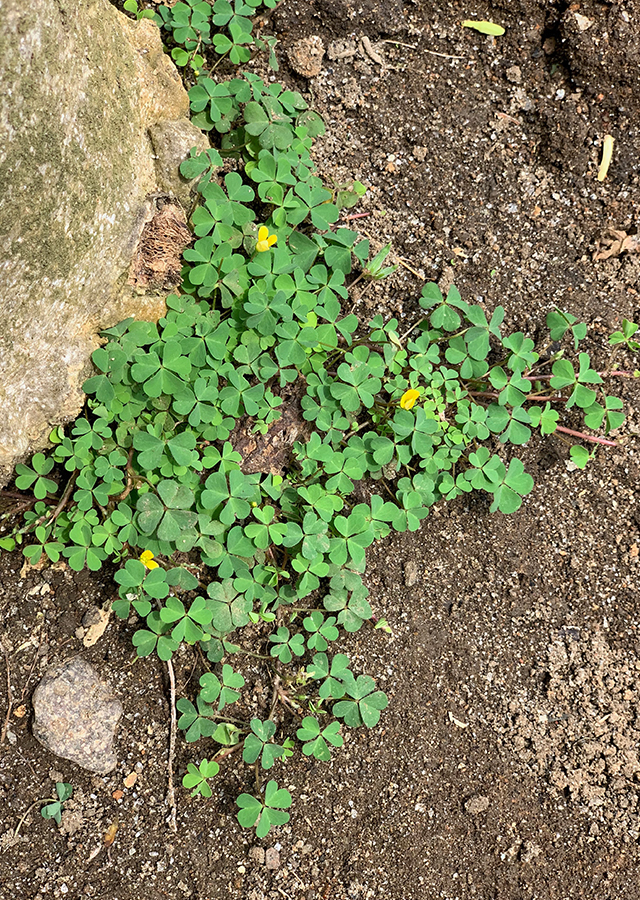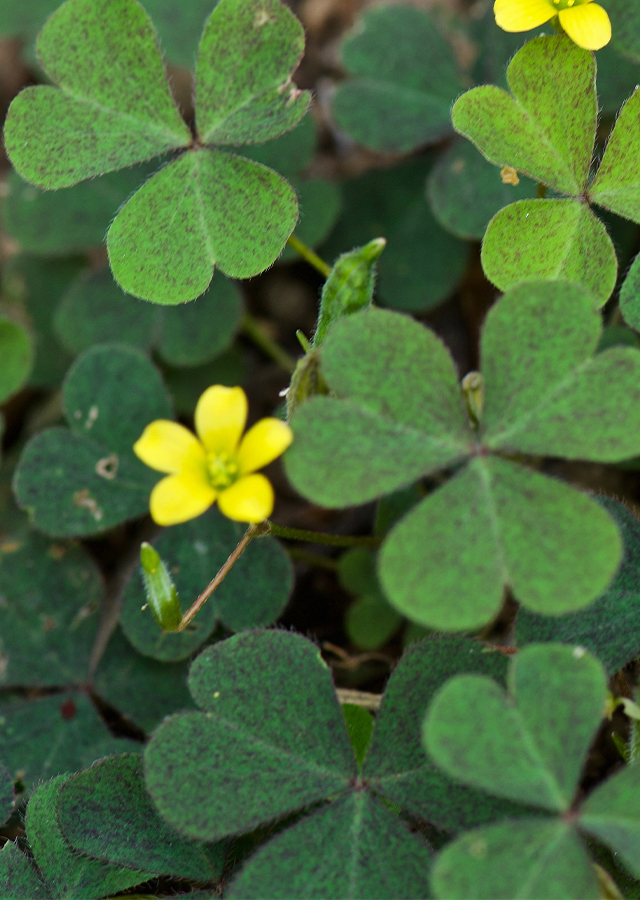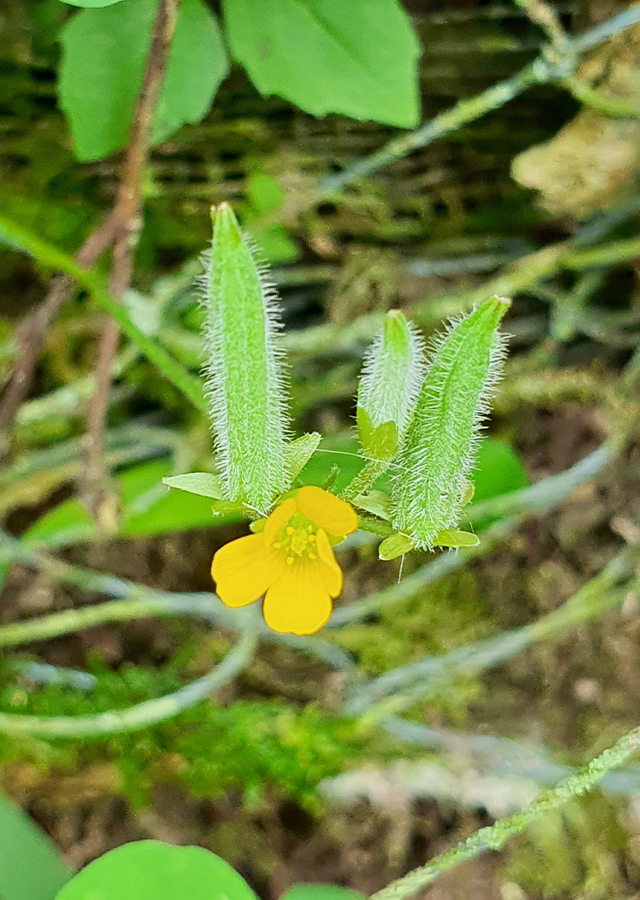Creeping Woodsorrel
Oxalis corniculata L.
Oxalidaceae
Location in our garden
Principal



Synonym
Acetosella corniculata (L.) Kuntze
Acetosella corniculata var. subglabra Kuntze
Acetosella corniculata var. villosa (M.Bieb.) Kuntze
Habitus
Herbaceous. A creeping or ascending small perennial or annual herb, growing to 10-30 cm.
Part Used
The Whole Plant
Growing Requirements
Full Sunshine
Habitat
Riverbanks
Forest
Grassland
Overview
Creeping woodsorrel is a cosmopolitan weed of unknown origin, although a southern European origin has been postulated. It occurs throughout South-East Asia, but is scarce in Peninsular Malaysia, Borneo and Sulawesi. Both leaves and flowers are edible, with a sharp taste which gives it its name.
Vernacular Names
Creeping lady's sorrel, Creeping oxalis, Creeping sorrel, Jimson weed, Oxalis, Wood sorrel, Yellow sorrel (English), Acedera, chulco (Spanish), Semanggi gunung (Indonesia).
Agroecology
Oxalis corniculata is a common weed in gardens, fields, grassland, in roadsides, on river banks and on walls, up to 3,000 m altitude. It thrives best in warm, moist, freely drained and fertile soils with a pH of 3.5-6.5 In temperate regions, Oxalis corniculata is mainly a problem in greenhouses, but sometimes escapes to establish locally outdoor populations.
Morphology
- Root - rooting at the nodes, main root fibrous, dark brownish, thin, about 1-2 mm thick, branched, rough, soft, no odor and taste.
- Stems - creeping, sometimes ascending, frequently rooting at the nodes.
- Leaves - soft and thin heart-shaped, trifoliate, alternate, adnate stipules at the base; stipules 1.5–2 mm long, ciliate, or rarely glabrous; leaflets sessile, ± equal, obcordate, with a narrow sinus about one-third of the way down, cuneate, pilose, particularly beneath and at margins.
- Inflorescence - cymose to pseudo-umbellate, pedunculate, 1-6(-8)-flowered bracts 2-several, sub-opposite to whorled.
- Flowers - yellow-colored flowers with 5 petals; peduncles axillary, 1–8 cm long, about as long as the petioles, pubescent or glabrous, ascending; bracts 2–many, linear-lanceolate, 2–4 mm long, acute to acuminate, pilose; pedicels 7–15 mm long.
- Fruit - capsule linear-oblong, usually abruptly narrowing at apex, (4–)9–17 mm long, puberulous.
- Seeds - 1–many per locule, ovoid-ellipsoid, flattened, brown, transversely ridged.
Cultivation
- Propagation is by seed.
- Best sown as soon as ripe in a cold frame.
Chemical Constituents
- Flavanoids, trihydroxy flavon (epigenin), tannins, phytosterols, phenols, glycosides, fatty acids, alkaloids, saponins, steroids, terpenoids, and volatile oils.
- 5-hydroxy-6,7,8,4'-tetramethoxyflavone and 5,7,4'-trihydroxy-6,8-dimethoxyflavone.
- Palmitic acid, a mixture of oleic, linoleic, linolenic, and stearic acids, phytosterols, phenolic compounds, amino acids, and proteins.
Traditional Medicinal Uses
- Potent antibacterial, antifungal, and insecticidal agent.
- Treat fever, thrush, sore throat, ulcers, and cough.
- Antidote.
- Anti-diabetic and anti-inflammatory.
- Anti-cancer, hepatoprotective, anti-implantation, and abortifacient activity.
Part Used
Reference Sources
- Arpita, M. (2019). Oxalis corniculata: a wonder plant. World J. of Pharmacy and Pharmaceutical Sciences 8(6): 634-642.
- Budiarti, C.E. (2004). Isolasi dan identifikasi senyawa flabonoida viteksin pada herba semanggi gunung (Oxalis corniculata L.) dengan spektrofotometri UV. Undergraduate Thesis. Fakultas Farmasi, Universitas Sanata Dharma, Yogyakarta.
- Rehman, A., Rehman, A., and Ahmad, I. (2015). Antibacterial, antifungal, and insecticidal potentials of Oxalis corniculata and its isolated compounds. Hindawi: International Journal of Analytical Chemistry 2015: 1-5.

